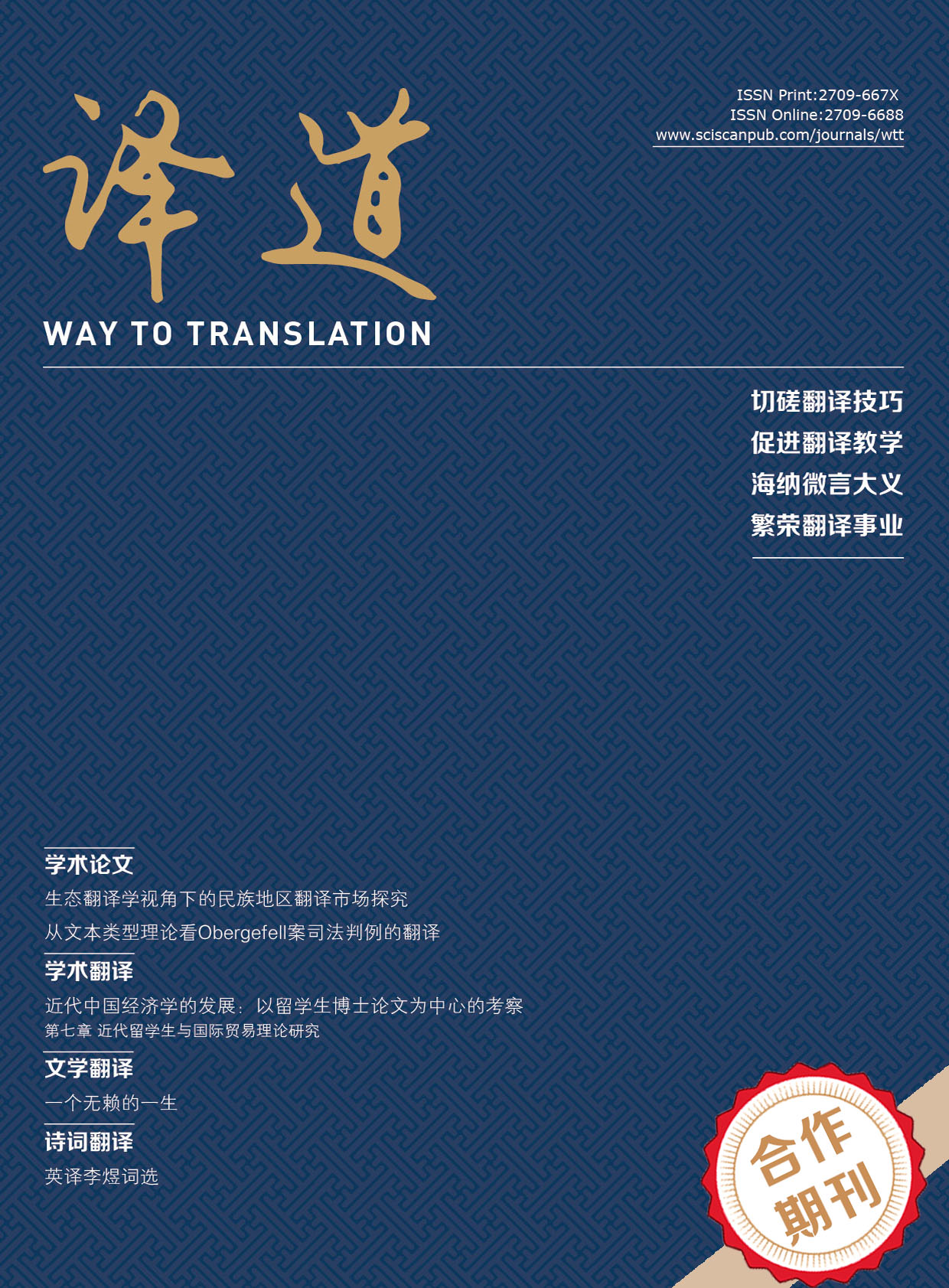免费订阅世刊出版平台最新发表资讯
《民法典》物权编英译文的情态意义研究
Realization of Modal Meanings in the Part “Real Rights” of the English Translation of CCPRC
- 作者: 陈明芳 余果
-
单位:
武汉工程大学外语学院,武汉
- 关键词: 《民法典》;法律文本;情态意义
- Civil Code; Legal texts; Modality
- 摘要: 本文基于Halliday的系统功能语法理论,探讨《中华人民共和国民法典》物权编英译文中的情态意义。通过对该译文中的低、中、高值情态动词进行统计发现,中值情态动词使用最多,其次是低值情态动词,使用最少的是高值情态动词。语气适中的中值情态动词在该译文里的大量使用,既体现了法律的督促、规范作用,又避免了其给人强制、武断等印象;语气较弱的低值情态动词在该译文里的适当使用,既达到了该文本劝告、建议的目的,又保持了其准确性、权威性;语气较强的高值情态动词的较少使用使该译文既避免了法律规范过于命令化、抽象化,又体现了法律文本的庄重性、严谨性。物权编译文中不同的情态表达式有效地实现了该文本明确权利、义务,对适用对象作出规约、许可、授权、禁止等功能。
- This study focuses on the English translation of the Real Rights Section of the Civil Code of the People’s Republic of China. Under the guidance of Halliday’s Systemic Functional Grammar, it examines the modal meanings by conducting a statistical analysis of the distribution of the modal operators with low, median, and high values in the English translation. The research findings indicate that the translation contains the highest frequency of the modal operators with median values, followed by the modal operators with low values, while the modal operators with high values are used the least frequently. The modal operators with median values are moderate in tone, and their extensive uses in the translation reflect the supervisory and regulatory function of the law while avoiding an impression of coercion or arbitrariness. The modal operators with low values are weak in tone, and their appropriate uses in the translation serve the purpose of advice and recommendations while maintaining accuracy and authority. The modal operators with high values are strong in tone, and their limited uses in the translation prevent the legal norms from sounding overly commanding, while demonstrating the solemnity and rigor of legal texts. The diverse employment of modal expressions in the translation of the Real Rights Section effectively fulfills the functions of clearly defining rights, obligations, establishing agreements, permissions, authorizations, and prohibitions towards applicable subjects.
- DOI: https://doi.org/10.35534/wtt.0303001
- 引用: 陈明芳,余果.《民法典》物权编英译文的情态意义研究[J].译道,2023,3(3):1-6.














